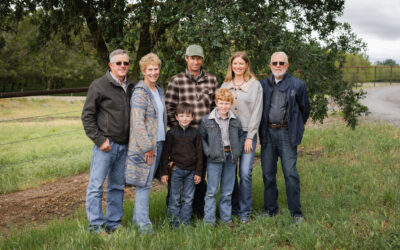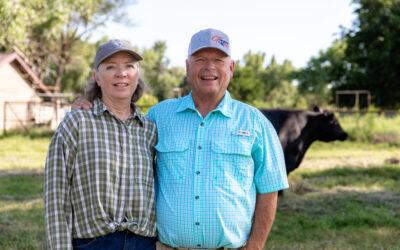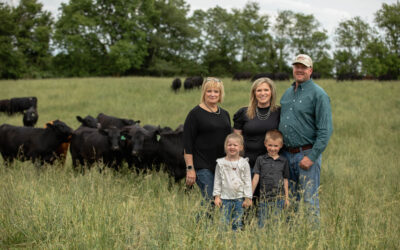
Following the Calves: Not in South Dakota anymore
“That’s my feeling—every animal out here is mine. How do I make the most money I possibly can?” says the 20-year manager of Irsik and Doll Feed Yard.

That commitment immediately caught on with South Dakota rancher Troy Hadrick. When he decided to retain ownership for the first time in 2013, he asked around and quickly settled on sending his cattle 633 miles south.
This year 87 head of home-backgrounded steers made the journey on January 19th. The day was sunny and brisk in South Dakota. In Kansas, they were just drying out from the ice storm that hit earlier in the week.
“Typically the cattle that have been on a long haul, we’ll try to acclimate them on horseback. Get them comfortable,” Mark says. “We exercise them all, taking them down the alley to get them used to the rider.”
It gives the animals a chance to stretch and get rid of the lactic acid buildup in their muscles, the feeder says.

The 640-lb. calves started on the warm-up ration and now, six weeks in, they’ll be on their third and final finishing ration any day. As always, they customized processing based on what they already knew of the cattle.
“I don’t like to use the same vaccine twice. I don’t like to use the same wormers twice,” Mark explains. “We monitor all the different stuff he’s given, and when he’s given it, and we try to complement that here.”
They’ve had very few pulls.
“I know those guys are very, very good at their jobs. The last thing I want to do is get in the way of them doing a good job,” says Troy, who checks in on his calves, but yields to the implanting and feeding expertise at the feedyard.
The rancher and feeder will talk about marketing as the July-target harvest dates get closer, but they have a pretty good plan in place already.
“When you’re working with the cow-calf deal, they are not all calving at the same time, so they aren’t going to grow and be ready at the same time, so our specialty is sorting the tops,” Mark says.

That’s important to Troy, who is set on grid marketing after seeing its value. Talking of last year’s lower market, the cattleman says, “They wouldn’t have made any money other than the grid premiums that they generated.”
The 2016 steer harvest went 80% CAB and Prime, adding an average of $75/head premium across the whole pen.
But even better than the added dollars is the data he pours over in a rich spreadsheet that he adds to, and then references when it’s time to make breeding and marketing decisions.
“Once I started getting a taste for that, now I just can’t get enough of it, because the more you know, the more you want to know,” he says.
May your bottom line be filled with black ink,
Miranda
PS–Learn more about what Troy’s been finding out, by following along in our, “Following the Calves” series (or catch up by reading, “Rapid change,” and “Proud to pass it on.”)
You can also check out ranches in Oklahoma and Montana in our other installments.
You may also like
Legacy in the Golden Land
On a quiet stretch of Northern California rangeland, a different story unfolds. The Borror family’s legacy modestly speaks through the cattle they raise, the ground they steward. The generations who’ve made a life here demonstrate commitment to doing things right, even when no one is watching.
Helping Hands, Helping Herds
“When I die, I want to come back as one of your cows,” murmurs a friend to Steve Zybach. Full to the brim from an alfalfa ration every day, bountiful fields of lovegrass stretched out across the Texas Panhandle—and owners who leave no ounce of cattle care up for question. The Zybachs’ motivation for this level of dedication to their Angus cattle is simply love.
An Ambassador for All
Joanie, with daughter Lindsey and her husband, Adam Hall, raise registered Angus cattle with two primary goals: producing high-quality seedstock that perform well in a wide variety of environments and ensuring end-user satisfaction. Those goals tie everything together, from promoting Angus to other producers to sharing their story with CAB partners and beef consumers.



